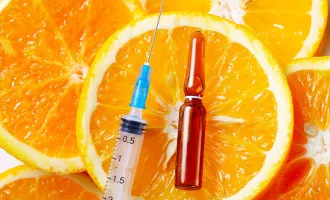DNA Sequencing, 3D-Printed Organs, Polar Bears
Hello world.
I don't know about you, but I love that friend who reads tons of random stuff on the internet. The slightest trigger inevitably sends him or her into an excited retelling of some interesting (and often obscure) fact or news article; conversation with them is never dull, and it’s sometimes all you can do to keep up. Do you need such a friend? Or want another? [Enter Messenger] In this column, I’ll be sharing the latest science/tech/health news that catches my eye. Or, if you want to be that friend, let this serve as a source of fun facts to throw around during your next happy hour.
In gadget news: Oxford Nanopore’s MinION device, a handheld USB-powered DNA sequencer, has finally made it into beta testers’ hands. The device feeds continuous strands of DNA up to 10 kilobases long through a nanopore, measures electrical conductivity of each base, and determines if it’s A, T, G, or C. In contrast, traditional sequencers analyze DNA fragments and use algorithms to stitch the reads back together. The idea apparently popped into the creator’s head as he was driving down I-5 almost twenty years ago. Some of its specs are downright impressive (its size and $1000 price tag), but others need great improvement (60-85% accuracy when it comes to actual sequencing), leaving beta testers with mixed feelings. If we believe the promise for future improvements, this paints a totally new picture of DNA analysis in research and the clinic. Even if this particular gadget doesn’t make it in the end, one day someone is going to sequence a complete genome in a cell phone-sized device with the words: “Back in my day, sequencers were the size of refrigerators.” References: Technology Review, Nature, enGadget, Oxford Nanopore.
In 3D printing news: Harvard professor of material science and biologically inspired engineering Jennifer Lewis spoke at this month’s EmTech conference on her team’s research and development of 3D printed organs. They use a variety of novel gels and nozzles to create 3D tissues with multiple cell types, vascular-like structures, and an extracellular matrix. Yes, they literally 3D print with cell-infused gels! By patterning gels containing human fibroblasts with other gels that form tube structures (into which they inject human endothelial cells), they can create three-dimensional structures for growing organs. They are currently making progress on patterning nephrons, the functioning unit of the kidney. The technology to 3D print a functioning kidney would be a game changer in organ transplants, where kidneys account for the most demand. References: Technology Review, Advanced Materials.
In ecology news: The starving polar bear has long been the poster child of climate change. This is because polar bears spend much of the year living on ice sheets, hunting seals. While ominous climate change predictions have been making headlines regularly, there is some good news: some polar bears are adjusting! Ice sheets melted earlier these past couple of years, forcing the polar bears onto land in the middle of snow goose breeding season; and it turns out that snow goose eggs and goslings are a great polar bear diet. And, what’s more, snow goose populations have exploded ever since loss of marshland uprooted them from wintering in southern states and relocated them to the endless bounty of corn, wheat, and rice fields of the Midwest. When this population of fifteen million birds migrates north in the summer, it strains the tundra’s ecosystems; the arrival of polar bears could potentially even out this particular imbalance. If polar bears continue to spend even more time on land, they may soon overlap with caribou breeding season as well. Unfortunately, shifting to the tundra ecosystem is only a temporary fix for polar bears, as it’s not clear how they’ll readjust their balance of energy intake and expenditure (their style of hunting typically involves lying around on ice sheets waiting for a seal to swim by, thereby protecting their fat stores) - so the long-term concerns are still there. What I want to know is how long evolution will permit landlocked polar bears to keep that beautiful creamy coat. References: New York Times, Scientific American, Hudson Bay Project.


